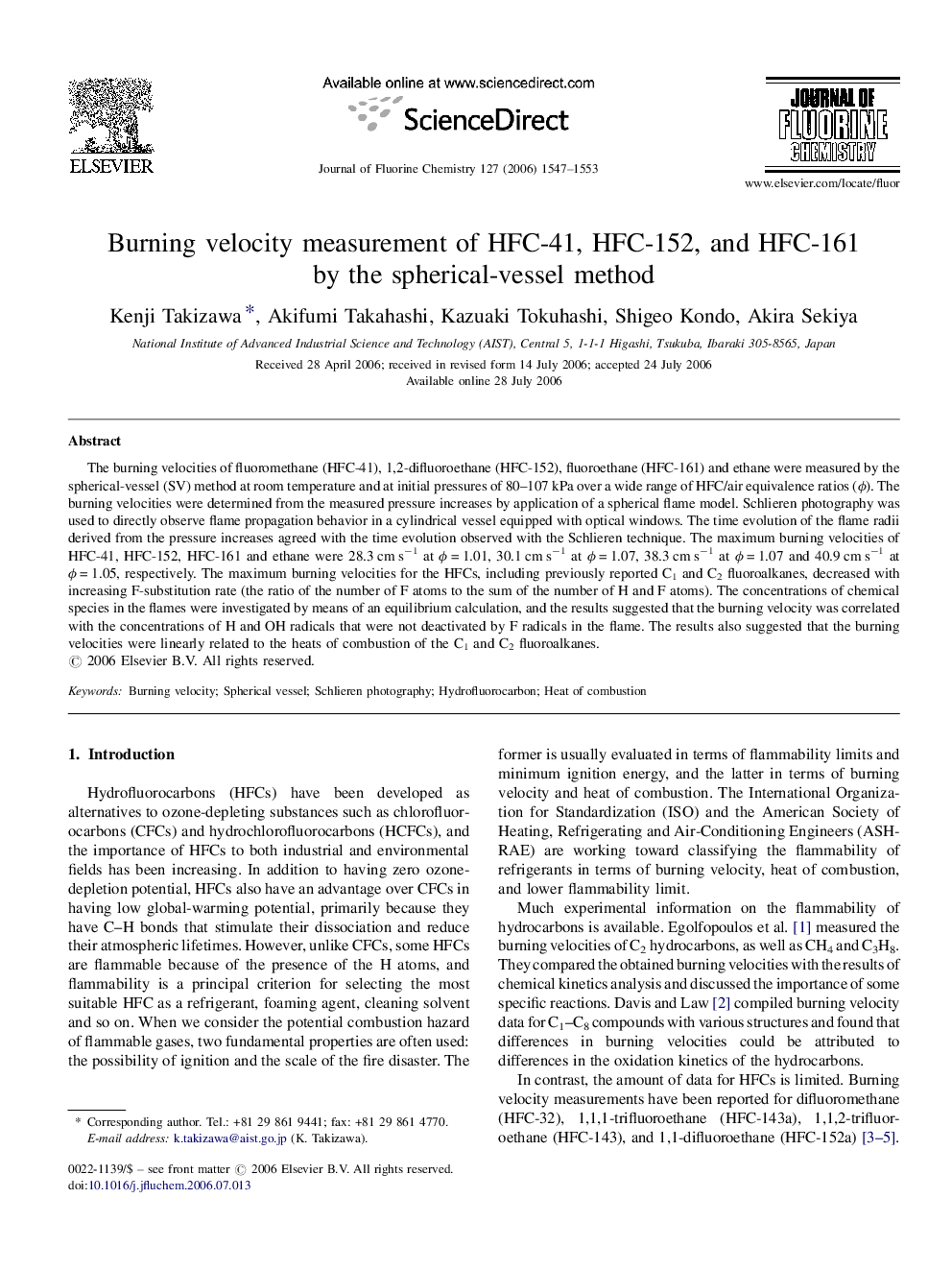| Article ID | Journal | Published Year | Pages | File Type |
|---|---|---|---|---|
| 1315150 | Journal of Fluorine Chemistry | 2006 | 7 Pages |
The burning velocities of fluoromethane (HFC-41), 1,2-difluoroethane (HFC-152), fluoroethane (HFC-161) and ethane were measured by the spherical-vessel (SV) method at room temperature and at initial pressures of 80–107 kPa over a wide range of HFC/air equivalence ratios (ϕ). The burning velocities were determined from the measured pressure increases by application of a spherical flame model. Schlieren photography was used to directly observe flame propagation behavior in a cylindrical vessel equipped with optical windows. The time evolution of the flame radii derived from the pressure increases agreed with the time evolution observed with the Schlieren technique. The maximum burning velocities of HFC-41, HFC-152, HFC-161 and ethane were 28.3 cm s−1 at ϕ = 1.01, 30.1 cm s−1 at ϕ = 1.07, 38.3 cm s−1 at ϕ = 1.07 and 40.9 cm s−1 at ϕ = 1.05, respectively. The maximum burning velocities for the HFCs, including previously reported C1 and C2 fluoroalkanes, decreased with increasing F-substitution rate (the ratio of the number of F atoms to the sum of the number of H and F atoms). The concentrations of chemical species in the flames were investigated by means of an equilibrium calculation, and the results suggested that the burning velocity was correlated with the concentrations of H and OH radicals that were not deactivated by F radicals in the flame. The results also suggested that the burning velocities were linearly related to the heats of combustion of the C1 and C2 fluoroalkanes.
Graphical abstractThe burning velocities of HFC-41, HFC-152 and HFC-161, were obtained by the spherical-vessel method. Figure optionsDownload full-size imageDownload as PowerPoint slide
